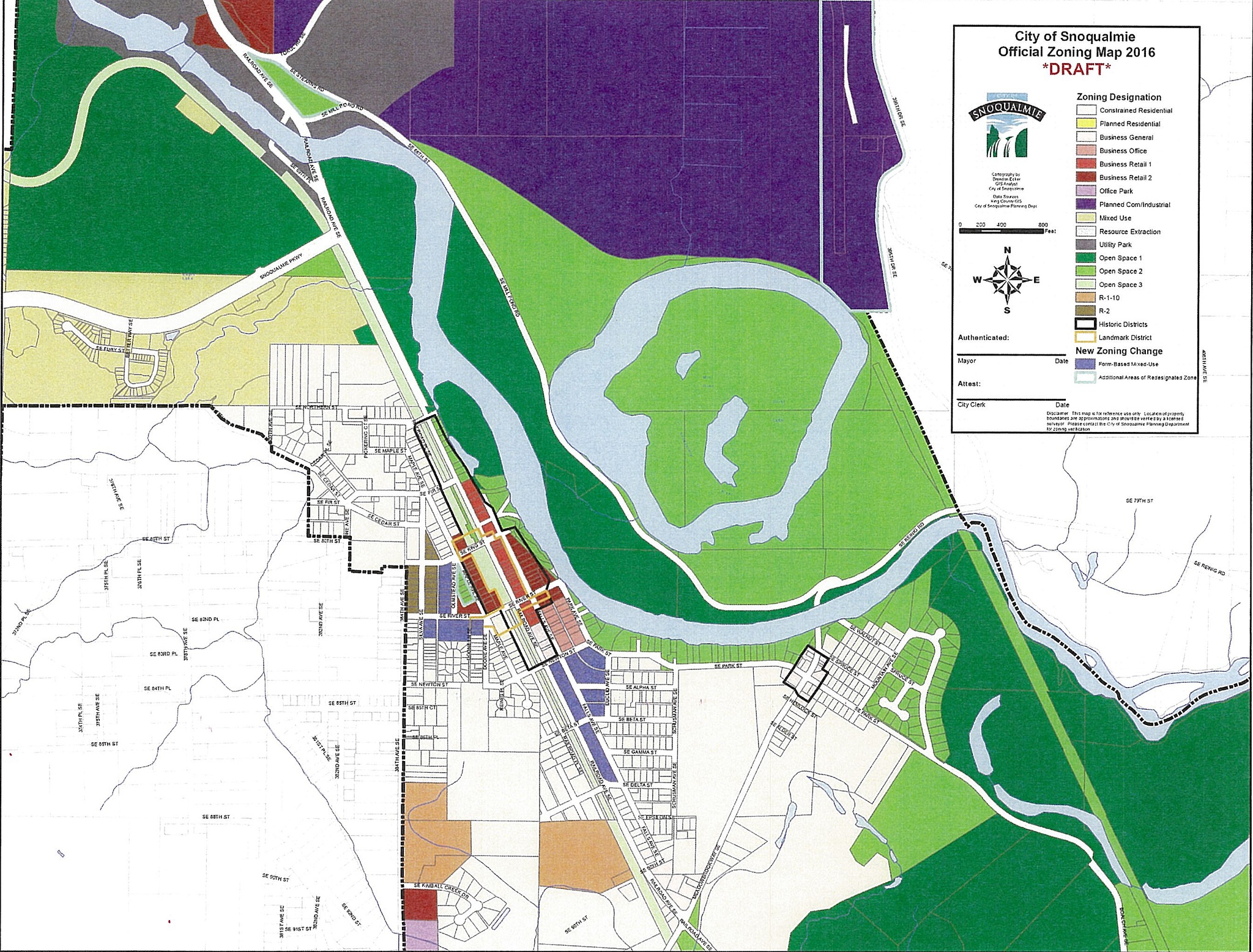At the Aug. 15 Snoqualmie Planning Commission meeting, Snoqualmie staff presented an overview of the city’s plan for the former Weyerhaeuser mill site, annexed by the city in 2012. As the property owners pursue their plans for development, city staff are developing the Mill Site Annexation Implementation Plan, or AIP, to ensure that development follows the rules set during the annexation.
Ben Swanson, senior planner at the city of Snoqualmie, along with DirtFish General Manager Mac McInnis and Goldsmith Land Development Services President and CEO Keith Goldsmith spoke about the mill site plan, the history of the site, and the process needed to get started with development.
In 2011, the city and mill site property owners, Snoqualmie Mill Ventures, LLC, signed a legally binding pre-annexation agreement, stating that all parties agreed on the same set of standards for development of the site.
“The pre-annexation (agreement) was signed and that was essentially an agreement between the city and the property owner when they were proposing to annex, on the expectations the city had of the property owner,” Swanson said during the meeting.
In 2012, the city of Snoqualmie annexed the mill site, located between S.E. Mill Pond Road and 396th Avenue S.E. for future development. Zoning for the mill site and surrounding areas had already been established; the mill site was zoned as planned commercial/industrial while the Weyerhaeuser-owned area just south was zoned as open space.
The AIP is a set of requirements and standards that the property owners need to meet in order to begin development plans. These requirements include environmental, structural, and historical studies.
“What the AIP process does is analyze the area being annexed into the city. It’s up to the owner of that area being annexed what it wants to do with the site, what they want to do with storm water, wetlands, extreme slopes,” Swanson said. “It’s a general high-level analysis showing the property has the ability to comply with the zoning codes and the rules when they annex into the city and gives the city a general idea of what they intend to do over there.”
Goldsmith explained that AIP’s are typically done prior to annexation, but this one was a follow up. He said planning had begun with an architect group selected by Snoqualmie Mill Ventures to develop a vision for the future of the site.
The AIP is referred to as a non-project action, meaning its approval will not signal the start of physical development of the site. If the AIP is approved by the Snoqualmie City Council, the land owners will submit a planned commercial industrial plan. That is where the physical changes will be seen. Development phases, building footprints, roads, sidewalks, and more will be in that plan.
“Right now we are looking on a much bigger level, phases, overall impacts to the site, traffic, transportation, sensitive areas, which was a huge one especially for a site this size and all that it’s gone through over the years,” Swanson said. “There is a lot of history to dig out of there with regard to sensitive areas and geology.”
While there has been environmental cleanup on the site and the owners have had geologists, a wetland biologist, and the U.S. Army Corps of Engineer examine the site, more testing and review will be done as the project moves forward.
“This isn’t a stopping point or limiting the city (from) asking for more. Once they come in with building footprints, the city will do additional environmental reviews at that time,” Swanson said. “Once they submit more detail in their plans then we will request more detail in their environmental review.”
The planning commission will work on this issue at two more meetings before a public hearing on the AIP is held. Following the hearing, the commission will make a recommendation to city council, which will then vote on the plan.
The Snoqualmie Planning Commission meets at 7 p.m. on the first and third Mondays of each month at Snoqualmie City Hall.



